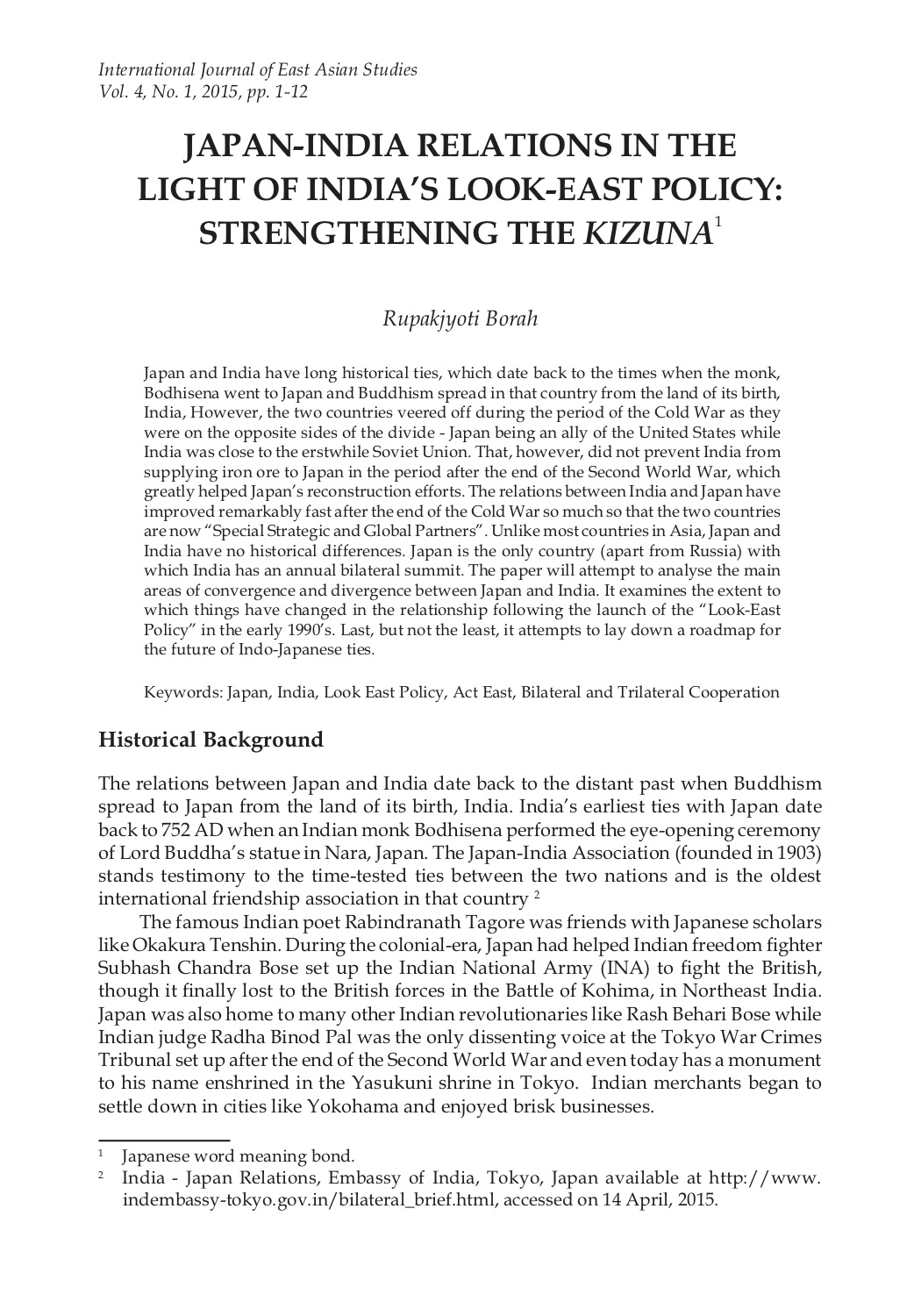Japan-India Relations in the Light of India's Look-East Policy: Strengthening the Kizuna
Main Article Content
Abstract
Japan and India have long historical ties, which date back to the times when the monk, Bodhisena went to Japan and Buddhism spread in that country from the land of its birth, India, However, the two countries veered off during the period of the Cold War as they were on the opposite sides of the divide - Japan is an ally of the United States while India was close to the erstwhile Soviet Union. That, however, did not prevent India from supplying iron ore to Japan in the period after the end of the Second World War, which greatly helped Japan’s reconstruction efforts. The relations between India and Japan have improved remarkably fast after the end of the Cold War so much so that the two countries are now “Special Strategic and Global Partners”. Unlike most countries in Asia, Japan and India have no historical differences. Japan is the only country (apart from Russia) with which India has an annual bilateral summit. The paper will attempt to analyse the main areas of convergence and divergence between Japan and India. It examines the extent to which things have changed in the relationship following the launch of the “Look-East Policy” in the early 1990s. Last, but not the least, it attempts to lay down a roadmap for the future of Indo-Japanese ties.
Downloads
Article Details
Copyright
Submission of a manuscript to the WILAYAH implies that the submitted work has not been published before (except as part of a thesis or report or abstract), that it is not under consideration for publication elsewhere; that all co-authors have approved its publication. The WILAYAH : International Journal of East Asian Studies adopts CC BY license. As such, we would be grateful if an acknowledgement accompanies the republication that the work was originally published in WILAYAH. The editors will ensure digital preservation of access to the journal content by the Journal depository section.
Disclaimer
Although the Department of East Asian Studies is the publisher of the WILAYAH : International Journal of East Asian Studies, the views presented in the WILAYAH are entirely those of the contributors and do not reflect the official stand of the Department of East Asian Studies. The Department does not hold itself responsible for the accuracy of any article published. Publisher and co-publishers assume no responsibility, nor by the editors for any injury and/or damage to persons or property as a result of any actual or alleged libellous statements, infringement of intellectual property or privacy rights, or products liability, whether resulting from negligence or otherwise, or from any use or operation of any ideas, instructions, procedures, products or methods contained in the material therein.

